僕はアメリカの高校に通っている頃、
What’s your last name?
It’s Tunnicliffe
Wow, that’s like so British!!
苗字は何ていうの?
タニクリフだよ。
おぉ、めっちゃイギリス人っぽいね!
しかし、日本人に苗字を教えると、なんだか英語っぽくないねと言われることがあります。なぜか考えてみましたが、Tunnicliffe をカタカナにすると、濁点や長音符や捨て仮名などがつかないのであまり英語っぽく感じないからなのか、もしくは「たに」と「くり」は日本人に馴染みのある言葉だからなのか、いまだによく分かりません。
たにとくりと言えば、以前新潟に住んでいた頃、印鑑が必要になったのですが、タニクリフは長く印鑑に収まらないので、漢字でのものを作って下さいと言われました。それを近所の人に相談すると、印鑑を作ってプレゼントしてくれました。その印鑑に「谷栗富」と彫られているのを見て、格好良いなとかなり嬉しかったことを覚えています。
なぜ僕が苗字の話をしているかというと、先日ある日本人に、
Is Tunnicliffe a popular last name in England?
と聞かれ、この英語の間違いは興味深いなと思ったからです。
英語で、popular first name は使いますが、popular last name は使いません。皆さんはなぜだか分かりますか?
苗字と違って、名前は親などが選んだりして考えるので、流行りなど時代によって人気のものがありますね。
例えば、僕の祖母の名前は Edith ですが、80年前 Edith という名前はとても人気でした。しかし現在 Edith という名前を子供に付ける親はあまりいません。
Edith is not a very popular first name anymore.
イーディスはもうあまり人気のない名前です。
popular は「人気」という意味になります。一方、commonは「よくある」、「普通」という意味です。
Edith used to be a very common first name.
イーディスは昔はとても普通の名前でした。
common も popular も名前に対して使えます。しかし、popular は苗字に対しては使えません。苗字は選んで付けることが出来ないので、人気という表現は使いません。
common は、人気ではないがよくある物事に対して使えます。
Very small apartments are common in Japan.
日本では、とても小さいマンションがよくあります。
Very small apartments are popular in Japan.
日本では、とても小さいマンションが人気です。
日本でもポピュラーという言葉を耳にしますが、「一般によく知られていること」のような意味でも使われているので、英語の popular とは使い方が異なります。
○Diabetes is a very common disease.
○糖尿病はとてもよくある病気だ。
× Diabetes is a very popular disease.
×糖尿病はとてもポピュラーな病気だ。
○Rainy days are common in the UK.
○イギリスでは雨の日がよくある。
×Rainy days are popular in the UK.
×イギリスでは雨の日が人気だ。
○My friend Diana is so popular.
○私の友達のダイアナはとても人気だ。
しかしたまに、commonは「月並みな」や「一般的な」という意味でも使われます。それなので、
My friend Diana is so common.
上記の英文は、「友達のダイアナはとても平凡だ。」という意味になってしまいます。

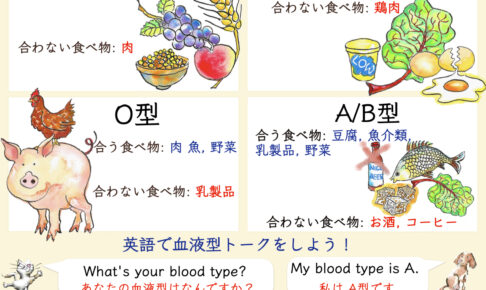
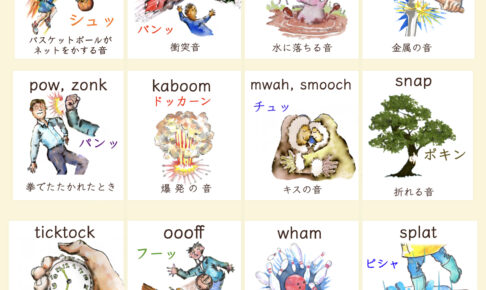
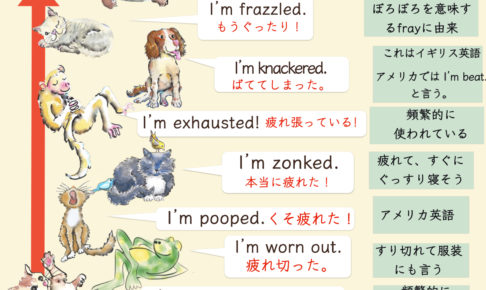
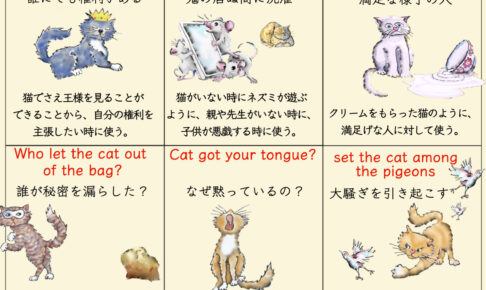




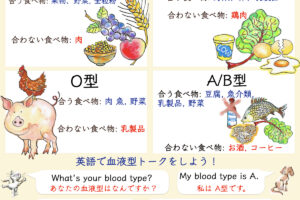
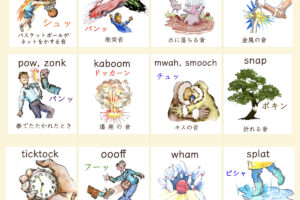
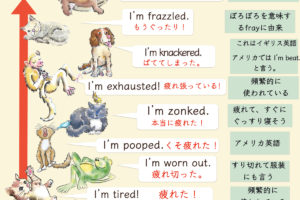
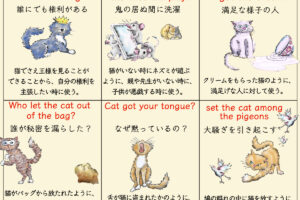
popularは勉強になりました。同じようにuniqueも日本語と英語で意味が違いますね。私は英語の意味で使うことが多いのですが、よく混乱されることがあります。
初めまして。私は英語を勉強したいのですが、何からやればいいのかわかりません。
何かアドバイスとかありますか?
Hi.
A word ‘ Metcha’ is a Osaka local dialect.
You translated ‘so’ in English into ‘Metcha’ in a Osaka local dialect as if it is Standard
Japanese. But,it is wrong.
Remind you that it’s not Standard Japanese as a tranlater or a English teacher for Japanese.
In actually,people who have common sense in and around Tokyo avoid some people who use it.
I was born in Tokyo. The people around me and I have never used it.
Great dentists have never used it,too.
The first class-merchants have never used it,too.
Why?
It’s nuance is expression of disgust.
So,we just think that ‘where did they come
from?’ to the people who speak so.
And,we know that they always watch the same TV program which is disgust and say the same words all the time to mimic it.
In english,you have ‘beautiful words’ and ‘ugly words’,too,right? It is the same thing.
If there is someone who hope to know what to say ‘so’ into Japanese,you can use a word ‘Totemo’ in Standard Japanese.
Aditionally,should someone say something like ‘here is more nice words.’ or ‘This one is the latest.’ or so.You must ignore those.
Because,it is disgust.
That’s the smart thkining we could all benefit from.
Hello again Luke,
I was thinking about the pronunciation of ” common “.
Because,It’s one of applicable word for
understanding IPA relative to an English letter.
・The major IPA vowel symbols,[a], [e], [i], [o], and [u], represent the sounds in European language.
・Some symbols in IPA used for the sound in English.
・IPA symbols do not represent English letters.
(E.g) ” common “:
・ UK : ˈkɒm.ən
・ US : ˈkɑː.mən
Have a look at ” o ” in ” common “:
・ UK : c( ɒ )mm( ə )n
・ US : c( ɑː)mm( ə )n
English letter ” O ” is pronounced ” ɒ “,” ɑː ” and ” ə ” in three ways.
I think it’s more important that we practice
each word’s sound or sentence’s sound Generally,
than arguments for definition of General
American ( or other areas )sound in itself.
So,it’s better to know what is represented by IPA symbols for all non-native English people.
・Vowels are generally voiced
・The tongue does not touch the roof of the mouth
・IPA vowels sound symbols have 3 points for each symbol:
1. height – about the tongue
2. backness – about the tongue
3. rounding – about the lips
● the tongue
1. low (E.g.:” a “) or height (E.g.:” i ” ) from the roof of the mouth
= open mouth or close mouth
* jaw also drops lower with ” a “.
2. ” back ” or ” front ” relative to the front of the mouth.
= ” dark sound ” or not
* the left : the front & the right : the back by the IPA diagram,if there is a pair of symbols.
・ Its position of every vowle differs from the rest
・ But,It’s rather imprecise
・ There’s not a particular point
・ I think it’s rather interactive depend on the consonant
● the lips ( the same position of the tongue )
3. unrounded (E.g.:” i ” ) or rounded (E.g.:” u ” )
= ” the left ” and ” the right ” in the IPA diagram,if there is a pair of symbols.
(( IPA vowel symbols))
■ 4 Open vowels in IPA:
ɑ :1. open
2. back (retracted )
3. unrounded
ɒ :1. open
2. back
3. rounded
a :1. open
2. front
3. unrounded
ɶ :1. open
2. front
3. rounded
■ 6 Close vowels in IPA:
u :1.close
2. back ( raised )
3.rounded( protruded )
i :1.close
2.front
3.unrounded
y :1.close
2.front
3.compressed
ɯ :1.close
2.back
3.unrounded
ʉ :1.close
2.central
3.protruded
ɨ :1.close
2.central
3.unrounded
■ 9 Front vowels in IPA:
a :1. open
2. front
3. unrounded
i :1.close
2.front
3.unrounded
æ :1.near-open
2.front
3.unrounded
e :1.close
2.mid front
3.unrounded
ɛ :1. open
2.mid front
3.unrounded
y :1.close
2.front
3.compressed
ɶ :1. open
2. front
3. rounded
œ :1. open
2.mid front
3. rounded
ø :1.close
2.mid front
3. rounded
■ 8 Back vowels in IPA:
ɑ :1. open
2. back (retracted)
3. unrounded
ɒ :1. open
2. back
3. rounded
u :1.close
2. back ( raised )
3.rounded( protruded )
o :1.close
2. mid back
3. rounded
ɔ :1. open
2. mid back
3. rounded
ʌ :1. open
2. mid back
3. unrounded
ɯ :1.close
2.back
3.unrounded
ɤ :1.close
2.mid back
3.unrounded
Have a look at ” o ” in ” common ” again.:
・ UK : c( ɒ )mm( ə )n:
● the first ” O ” in UK:
ɒ :1. open
2. back
3. rounded *not unrounded
・ US : c( ɑː)mm( ə )n:
● the first ” O ” in US:
ɑ :1. open
2. back (retracted )
3. unrounded *not rounded
● the second ” O ” in both pronunciation:
e :1.close *not open
2.mid front * not back
3.unrounded *not rounded
Whereas,” あ “(= “ア ”) in Japanese is not had a consciousness on the position of the tongue like IPA vowels.
For example,think about ” I am.” = ” aɪ æm ” in IPA.
a :1. open
2. front
3. unrounded
æ :1.near-open
2.front
3.unrounded
What is the common point among ” ɒ ” ,” ɑ “,” a “,” e “,” a ” and ” æ ” ?
No one discribe the point that is simple and important for native Japanese speaker.
I mean ” the low or height position ” means the almost part of tongue is sticked to the bottom of the mouth.
I guess your tongue rest behind your lower teeth when you say ” I am.” or “common “.
” Low ” or ” close ” indicate the height from tongue sticked to the bottom to the roof of the mouth.